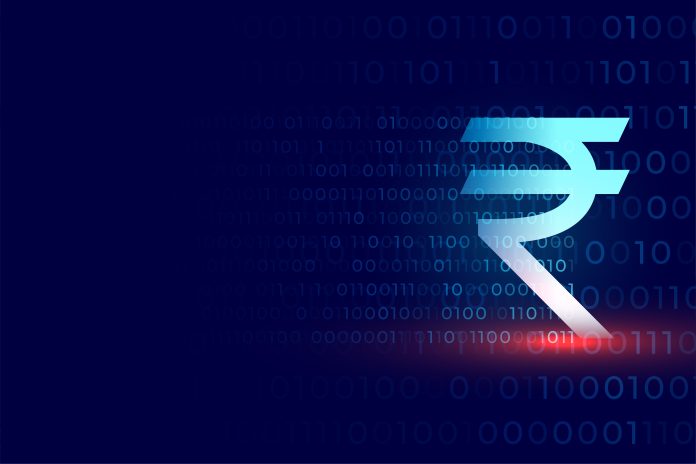It is known to the country’s citizens that the Indian government has been aiming to convert the nation into a cashless economy. This said, it has time and again taken bold steps to reduce the nation’s dependency on cash and adopt cashless modes of payments like the use of debit cards, NEFT or RTGS, mobile wallets or UPI apps. On December 1, 2022, the Reserve Bank of India (the central bank of the country) launched its digital currency/rupee pilot taking a huge step forward towards becoming a cashless economy.
This launch has got all Indians excited and at the same time curious. What is the new digital rupee? How will it be used? Who can use it? When will the RBI officially roll out the digital currency for the whole country?
Let’s answer some of the basic questions.
What is India’s Digital Rupee?
The actual meaning and use of the digital rupee, also known as the Central Bank Digital Currency (CBDC), remains to be largely unclear. However, as per what is said by RBI, the digital rupee, e₹-R or e-Rupee will be made available in the form of a digital token representing legal tender. It is a sort of official cryptocurrency, for retail users.
Simply put, it is the electronic version of cash and will be primarily meant for retail transactions.
The digital rupee will be issued in the same denominations as paper currency and coins. Ex ₹500, ₹2000, ₹50.
How has the RBI planned to roll out the currency?
The RBI has planned on rolling out the digital currency in a phased format. The first phase was launched on December 1. Initially, it will cover select locations and banks in a closed user group (CUG) comprising participating customers and merchants.
It will take into account four cities of Mumbai, New Delhi, Bengaluru, and Bhubaneswar, where customers and merchants can use the digital rupee (e₹-R), or e-rupee.
State Bank of India, ICICI Bank, Yes Bank, and IDFC First Bank are the four banks which are involved in the controlled launch of the digital currency in these four cities.
How will it work?
The e-rupee will be available to be used by all – non-financial consumers, businesses and the private sector. Just like we store paper currency in our wallets, users of the digital rupee will be able to store the e-rupee in a digital wallet offered by the participating banks. These digital wallets will be stored on mobiles for easy access by the users at the time of the transaction.
The digital currency will be distributed through intermediaries such as banks. Person-to-person payments as well as person-to-merchant payments can be made using the digital rupee. Users can pay merchants using QR codes displayed at merchant locations.
RBI has said, “The e₹-R would offer features of physical cash like trust, safety and settlement finality. As in the case of cash, it will not earn any interest and can be converted to other forms of money, like deposits with banks.” Further, the value of the e-rupee will remain the same and not be volatile as a cryptocurrency.
What is the purpose behind this launch?
The main purpose of launching the country’s own digital currency, apart from going cashless, is to reduce the operational cost involved in physical cash management.
Another reason for launching a national digital currency is to put an end to concerns like money laundering, terror financing, tax evasion, etc that are associated with private cryptocurrencies like Bitcoin, Ether, etc.
Lastly, the government also aims to foster financial inclusion, encouraging resilience, efficiency and innovation in the payments system through CBDC.
What is the future plan?
The first phase of the roll-out of CBDC or e-rupee is set in motion, the RBI has planned to subsequently extend the service to the cities of Ahmedabad, Gangtok, Guwahati, Hyderabad, Indore, Kochi, Lucknow, Patna, and Shimla. Alongside this, it will also include four more banks in its pilot project which include — Bank of Baroda, Union Bank of India, HDFC Bank, and Kotak Mahindra Bank.
Gradually, the expanse of the pilot will include more banks, users and locations as needed.
The frequent use of digital currency will encourage more cross-border transactions. Physical cash management costs will also drop significantly.
Nevertheless, the RBI has clarified that atleast as of now, CBDC will not be seen as a replacement for the current currency system. It will instead, complement the system with a digital alternative.
The inclusion of digital currency into the country’s payment system is said to be advantageous. Unlike the UPI method that requires an individual to have a bank account, users won’t be needed to have a bank account in order to transact using digital currency.
Additionally, ease of use, less chance of physical damage to the currency, fewer chances of fraud, a complete sovereign guarantee due to currency issuance by RBI, added transparency to online transactions, real-time payments, etc are some plus points of the new digital rupee.































